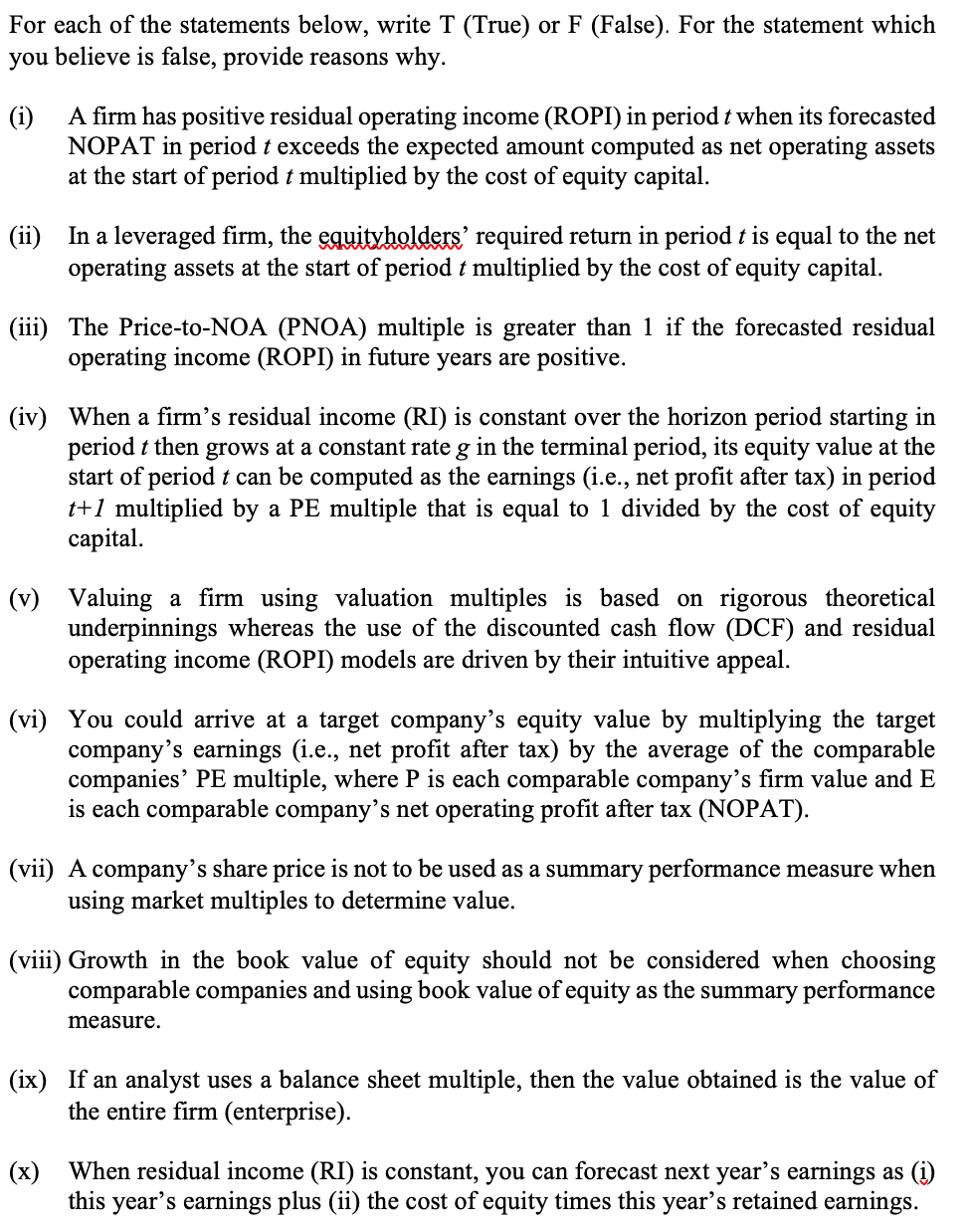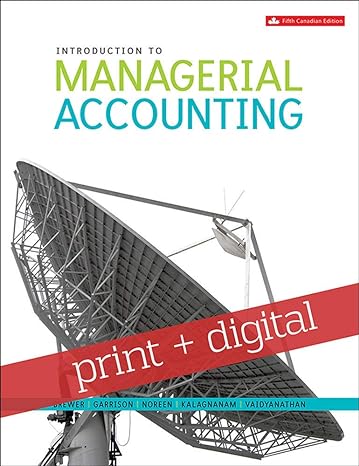
For each of the statements below, write T (True) or F (False). For the statement which you believe is false, provide reasons why. (i) A firm has positive residual operating income (ROPI) in period t when its forecasted NOPAT in period t exceeds the expected amount computed as net operating assets at the start of period t multiplied by the cost of equity capital. (ii) In a leveraged firm, the equityholders' required return in period t is equal to the net operating assets at the start of period t multiplied by the cost of equity capital. (iii) The Price-to-NOA (PNOA) multiple is greater than 1 if the forecasted residual operating income (ROPI) in future years are positive. (iv) When a firm's residual income (RI) is constant over the horizon period starting in period t then grows at a constant rate g in the terminal period, its equity value at the start of period t can be computed as the earnings (i.e., net profit after tax) in period t+1 multiplied by a PE multiple that is equal to 1 divided by the cost of equity capital. (v) Valuing a firm using valuation multiples is based on rigorous theoretical underpinnings whereas the use of the discounted cash flow (DCF) and residual operating income (ROPI) models are driven by their intuitive appeal. (vi) You could arrive at a target company's equity value by multiplying the target company's earnings (i.e., net profit after tax) by the average of the comparable companies' PE multiple, where P is each comparable company's firm value and E is each comparable company's net operating profit after tax (NOPAT). nance measure when (vii) A company's share price is not to be used as a summary perfo using market multiples to determine value. (viii) Growth in the book value of equity should not be considered when choosing comparable companies and using book value of equity as the summary performance measure. (ix) If an analyst uses a balance sheet multiple, then the value obtained is the value of the entire firm (enterprise). (x) When residual income (RI) is constant, you can forecast next year's earnings as (i) this year's earnings plus (ii) the cost of equity times this year's retained earnings. For each of the statements below, write T (True) or F (False). For the statement which you believe is false, provide reasons why. (i) A firm has positive residual operating income (ROPI) in period t when its forecasted NOPAT in period t exceeds the expected amount computed as net operating assets at the start of period t multiplied by the cost of equity capital. (ii) In a leveraged firm, the equityholders' required return in period t is equal to the net operating assets at the start of period t multiplied by the cost of equity capital. (iii) The Price-to-NOA (PNOA) multiple is greater than 1 if the forecasted residual operating income (ROPI) in future years are positive. (iv) When a firm's residual income (RI) is constant over the horizon period starting in period t then grows at a constant rate g in the terminal period, its equity value at the start of period t can be computed as the earnings (i.e., net profit after tax) in period t+1 multiplied by a PE multiple that is equal to 1 divided by the cost of equity capital. (v) Valuing a firm using valuation multiples is based on rigorous theoretical underpinnings whereas the use of the discounted cash flow (DCF) and residual operating income (ROPI) models are driven by their intuitive appeal. (vi) You could arrive at a target company's equity value by multiplying the target company's earnings (i.e., net profit after tax) by the average of the comparable companies' PE multiple, where P is each comparable company's firm value and E is each comparable company's net operating profit after tax (NOPAT). nance measure when (vii) A company's share price is not to be used as a summary perfo using market multiples to determine value. (viii) Growth in the book value of equity should not be considered when choosing comparable companies and using book value of equity as the summary performance measure. (ix) If an analyst uses a balance sheet multiple, then the value obtained is the value of the entire firm (enterprise). (x) When residual income (RI) is constant, you can forecast next year's earnings as (i) this year's earnings plus (ii) the cost of equity times this year's retained earnings







